What are the Layers of Earth?
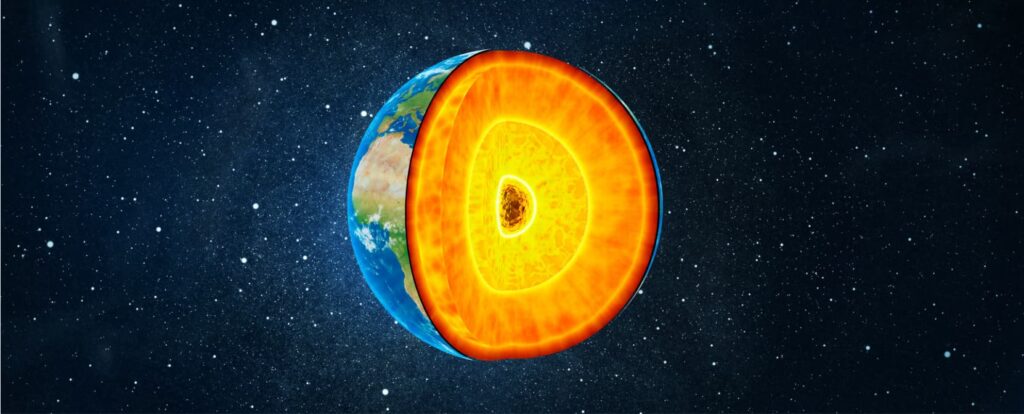
Has your child or student ever tried to dig a hole in the ground, entirely convinced that they were going to be the first-ever explorers to dig to the other side of the planet? Lots of kids have had this same idea, and many have even tried doing it themselves! Of course, it’s never been done (for one, those little plastic shovels just aren’t tough enough), but it does present a golden opportunity to answer curious questions about the internal composition of our planet, such as “What are the layers of Earth?”
Digging a hole to the other side of the planet may sound a bit fantastical to an adult, but children’s imaginations aren’t completely off track. They know that Earth is a sphere. They also know that we are on the outside of that sphere, and that to get through the middle, we would have to go down. Without any further information, their reasoning minds conclude that they could most certainly get to the other side if they dig for long enough. In order to understand why it isn’t possible (with current technology at least), they need to learn more about the layers of Earth.
Table of Contents
- What Are the Layers of Earth?
- How Do Scientists Learn About the Layers of Earth?
- What Are the Layers of Earth? – Lessons & Activities
- Try Montessori Laboratory’s Hands-on Science Lessons for Free
What Are the Layers of Earth?
In The First Great Lesson, children learn that Earth is made up of many tiny particles, and that those particles settle according to their density. Those two phenomena are part of the reason why the Earth formed the way it did, and also why Earth is composed of four main layers:
- The Crust
- The Mantle
- The Outer Core
- The Inner Core
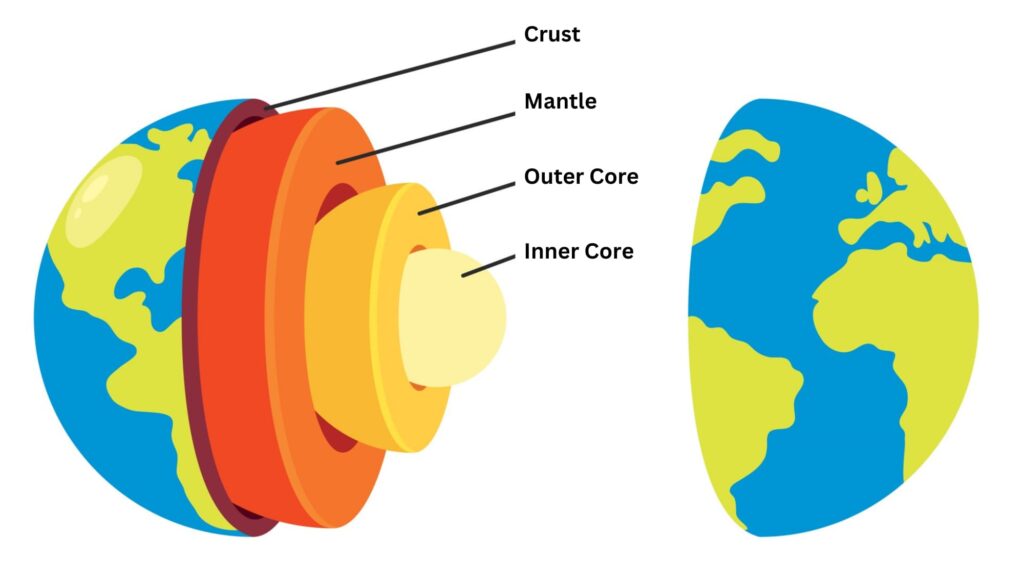
Let’s look at each one in more detail:
The Crust
The layer we live on, the crust, is made of solid rock – mostly granite and basalt. This layer includes all of the surfaces and landforms you can see: mountains, canyons, riverbeds, coastal plains, etc. It also includes things you can’t see like the ocean floor, and the rock buried 9-12 miles beneath it.
This layer can be further divided into two types: continental crust, which forms the landmasses on Earth’s surface; and oceanic crust, which forms the deep-sea floors.
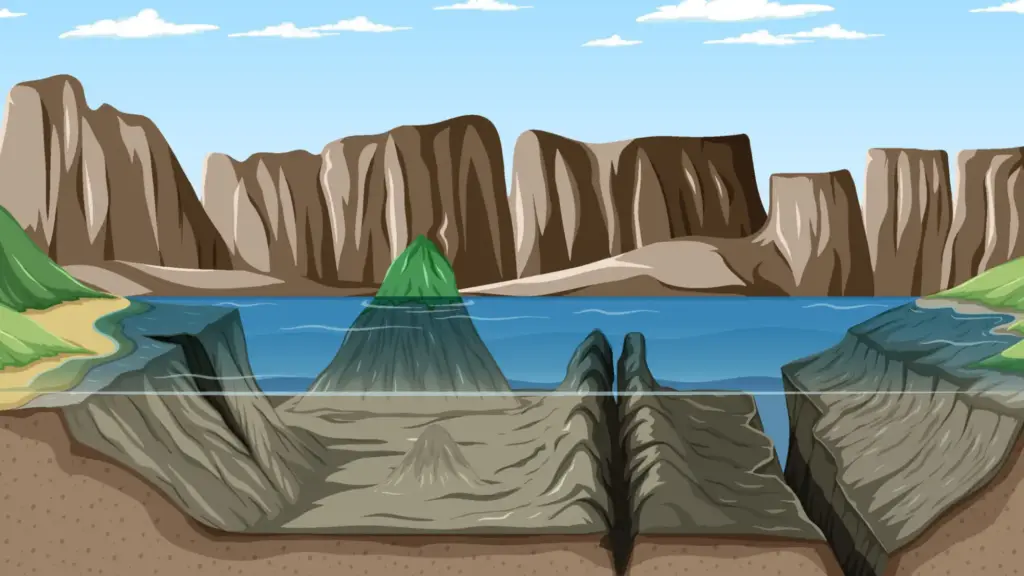
The Mantle
Earth’s mantle layer is a fascinating part of our planet. It sits between the crust and the core, reaching about 1,800 miles deep (or the same distance from New York to New Mexico). The mantle is made up of several different minerals and elements, including olivine, pyroxene, and amphibole, quartz, and feldspar. It holds huge amounts of energy that move tectonic plates, create volcanoes, and make those volcanoes erupt.
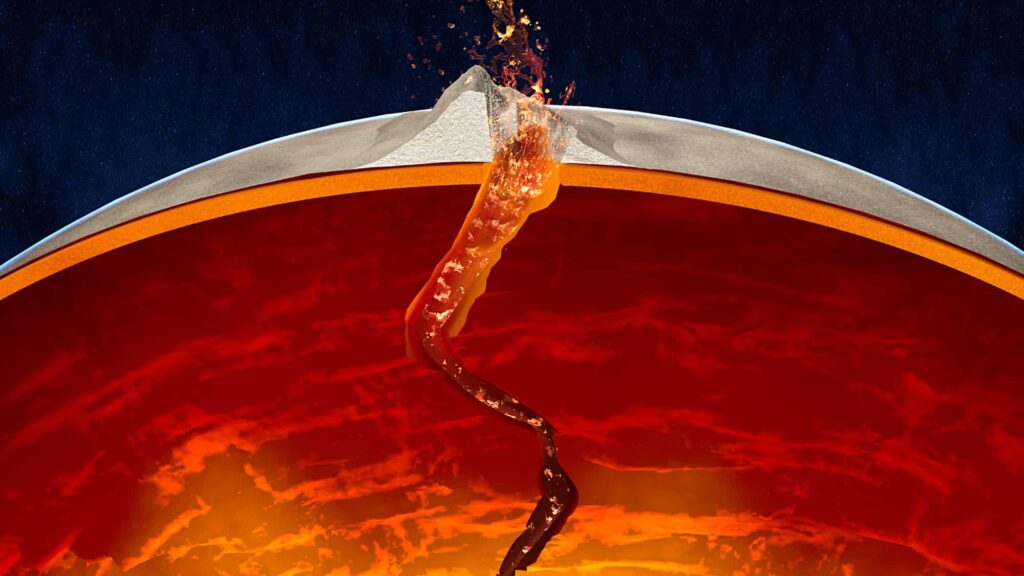
The Outer and Inner Core
Earth’s core has two layers: the outer core and the inner core. The outer core is made of mostly iron and nickel, and since it is estimated to be 5,500 degrees Fahrenheit, the outer core is liquid.
Like the outer core, the inner core is made of mostly of iron and nickel. It’s estimated to be around 9,000 degrees Fahrenheit, so you would think the metals would turn to liquid like in the outer core, but there is so much pressure down there, that they think it is actually solid.
The composition of the core has never technically been confirmed though, because no one has ever drilled that deep. In fact, scientists have never gotten past the Earth’s crust to reach the second layer, the mantle (so you probably won’t be getting there with a backyard shovel). It might sound crazy, but we know more about space than we know about what’s beneath the surface of our own planet.
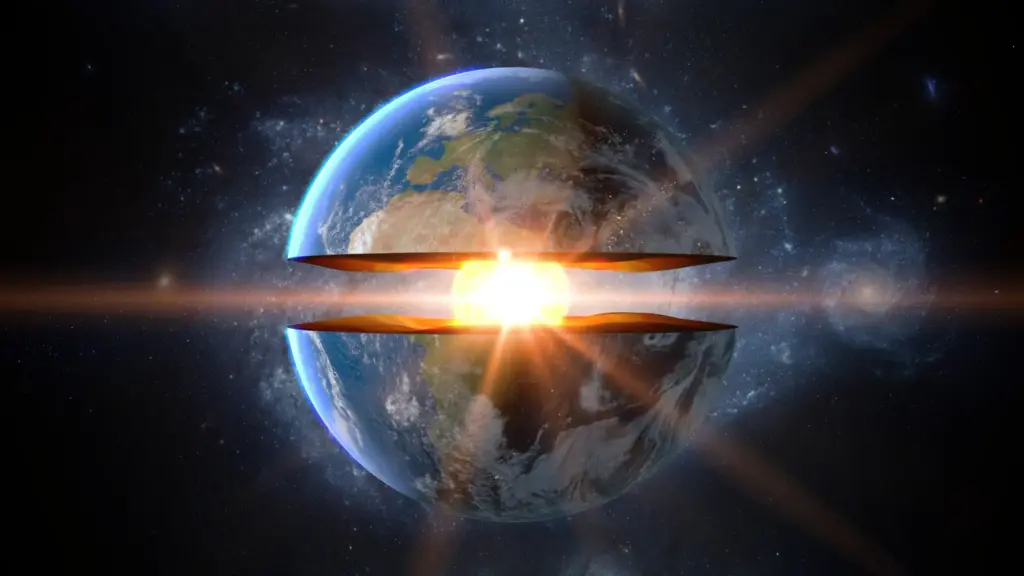
How Do Scientists Learn About the Layers of Earth?
If scientists have never even drilled past Earth’s crust, how do we have answers to questions like: “What are the Layers of Earth?”
Well, even though we have not dug deep enough to see all the layers of Earth directly, scientists have other ways to figure out what’s going on underneath us.
One of the main ways scientists have learned about Earth’s layers is through earthquakes! When an earthquake occurs, it generates seismic waves. These are vibrations that travel through Earth. Some of them even reach the other side of the globe! These waves change speed and direction when they pass through different materials, and by carefully studying these changes, scientists can infer what materials make up the different layers of Earth.
What Are the Layers of Earth? – Lessons & Activities
If you want to dive deep into the layers of Earth with your learners, Montessori Laboratory’s Composition of Earth and Layers of Earth lessons are the perfect way to introduce them to the topic through a series of big-picture video lessons and hands-on activities.
Composition of Earth
Starting with a high-level introduction to Earth’s layers, children will get an impressionistic idea of what Earth’s layers look like, and how big they are. Two activities in this lesson include:
- Modelling the layers of Earth using an apple, where the peel represents the crust, the flesh as the mantle, and the core as the – well, the core.
- Drawing a scaled diagram of Earth’s layers including the depths of each layer in comparison to each other.
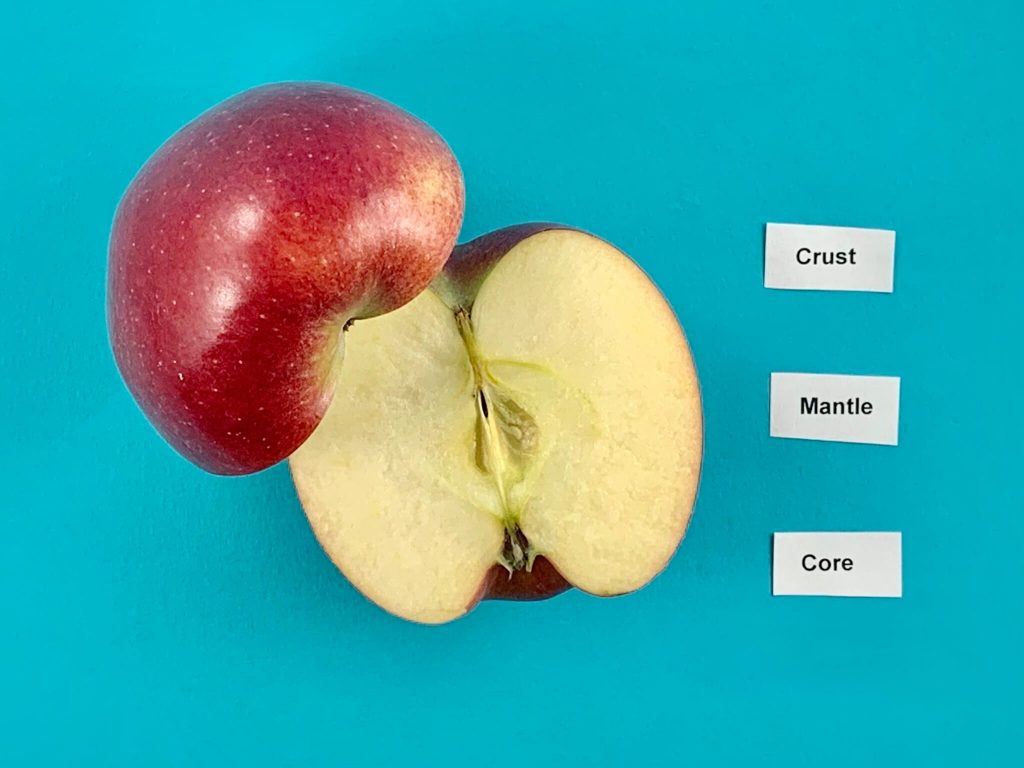
Layers of Earth
Digging a little deeper into the layers of Earth, our lesson of the same name includes two separate video lessons on the crust and the barysphere to bring these layers to life for young learners. Supplemental activities include identifying between granite and basalt (two major components of the Earth’s crust), rock nomenclature cards, layers of Earth nomenclature cards, and a research card and printable research report.
Try Montessori Laboratory’s Hands-on Science Lessons for Free
Are you interested in seeing what Montessori Laboratory’s big-picture lessons, hands-on experiments, and engaging science activities are all about? Check out the free lessons below!
The First Great Lesson
Where did the stars come from? And the Sun? How was our Earth created? And what about the rest of…
Combining and Separating
Why does sand settle to the bottom of the ocean, but salt mixes in? How do people get sea salt out…
How Did Humans Discover Fire?
When did we start using fire? What 3 components does fire need to burn?
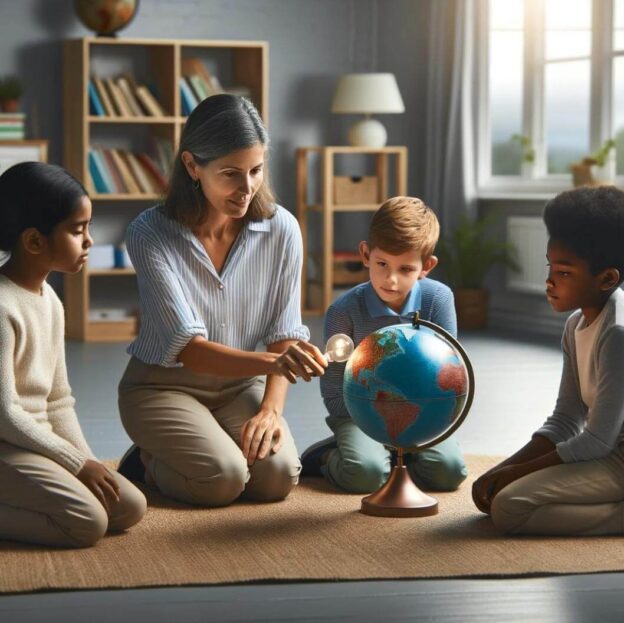
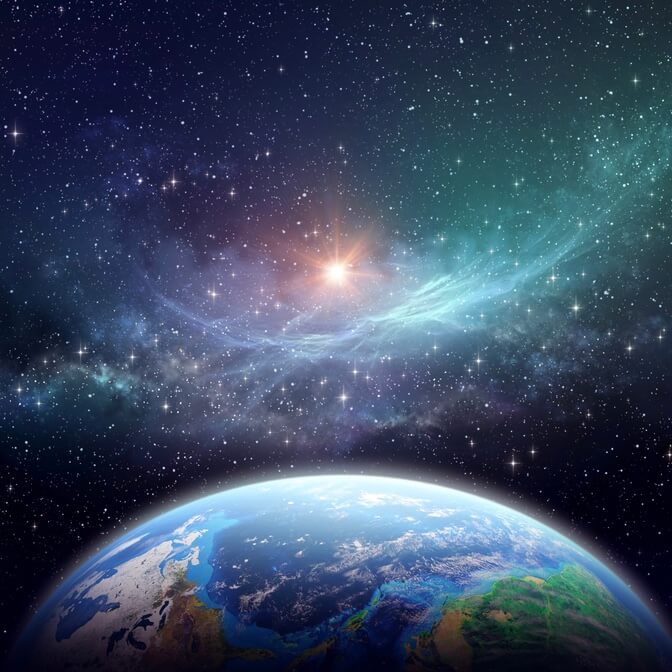

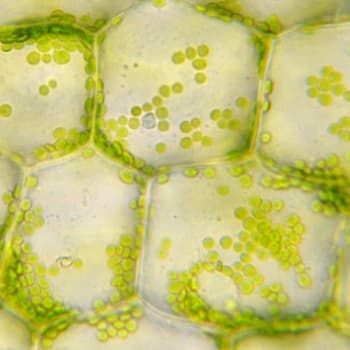

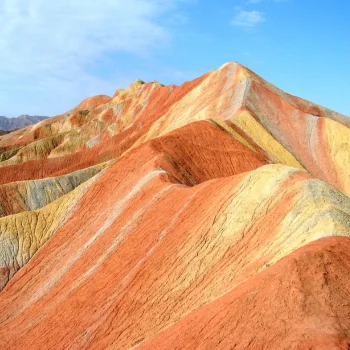
Responses